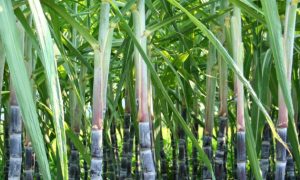After paddy, wheat woes for Punjab farmers: sowing 3 days away, DAP shortage hits hard

Punjab is facing a 30% shortage of Diammonium Phosphate (DAP) fertilizer, essential for the upcoming wheat sowing season. While the Centre has assured increased DAP supplies by November 25, alternatives like NPK, Triple Super Phosphate (TSP), and Single Super Phosphate (SSP) are limited and costly. Farmers, accustomed to DAP, are reluctant to switch, as they find substitutes less effective and financially burdensome. The fertilizer gap risks affecting wheat yields on over a million hectares if not addressed soon.
Without timely availability, farmers risk reduced crop health and yield, which can impact wheat cultivation in a large area (over one million hectares out of total 3.5 million hectares) in Punjab. (Express Photo) With the wheat sowing season in Punjab just three days away, the state is grappling with a significant 30 per cent shortage of Diammonium Phosphate (DAP), a preferred fertiliser, making farmers jittery as they find it hard to meet nutrient requirements for the crop. Following the Centre’s “assurance of increasing the supply of DAP”, the state government has asked farmers to use alternatives to DAP, but the concerns remain as only limited quantities of alternative fertilisers are available to bridge the gap — that too at high prices.
“As sowing progresses, the state will get the regular supply of DAP by November 25. We will be able to meet the target,” said Punjab Agriculture Department Director Jaswant Singh, adding DAP alternatives are coming in sufficient amounts.
Punjab requires nearly 5.50 lakh tonnes of DAP for the Rabi season from October to April, during which wheat, potatoes and various other vegetables (grown in three cycles) are cultivated. According to the Agriculture Department’s recommendation, of the 5.50 lakh tonnes of DAP, around 5 lakh tonnes are needed specifically for wheat and potatoes — around 4.35 lakh tonnes for wheat alone.
The department advises applying 55 kg of DAP per acre for wheat, but farmers can use a single bag of 50 kg, and around 2.5 bags of 50 kg per acre for potatoes. Potato sowing begins in October, while wheat sowing ideally starts on November 1 and ends by November 15. Punjab has received 4.07 lakh tonnes of DAP between July and October, of which around one lakh tonnes have already been used for potatoes, other vegetables and other crops. However, with wheat requiring around 4.35 to 4.40 lakh tonnes of DAP in the next 15-20 days, there is currently a shortfall of 1.35 to 1.40 lakh tonnes. This means out of the projected 86.45 lakh acres (35 lakh hectares) under wheat cultivation, DAP is available for only about 60 lakh acres.
According to a Punjab Agriculture Department official, the state’s annual DAP requirement is 8.5 lakh tonnes, of which 5.50 lakh tonnes are utilised during the Rabi season. Farmers rely on DAP for its high phosphorus content (46%) and nitrogen (18%) — both essential to promote strong root development and optimal crop yield. DAP is used at the time of sowing of the crop. It cannot be used afterwards. However, with the DAP supply in shortage, farmers are being encouraged to consider alternative fertilisers like NPK (which contains 12% nitrogen, 32% phosphorus, and 16% potassium), Triple Super Phosphate (TSP), which has a similar phosphorus content (46%) but lacks nitrogen, and Single Super Phosphate (SSP), which provides phosphorus, sulfur, calcium and traces of other micronutrients. Besides, if DAP is required at one bag or 55 kg per acre (around Rs 1,350 to Rs 1,485 per bag), NPK requires 75 kg (1.5 bags) per acre (around Rs 1,250 per bag), SSP requires 150 kg (three bags) per acre (around Rs 550 per bag), and TSP requires 50 kg per acre (Rs 1,250 per bag) along with 20 kg of urea (Rs 5 per kg), totalling around Rs 1,350. In Punjab, the availability of these alternatives is also limited. There is one lakh tonnes of NPK, which comes in various grades, and only 12:32:16 grade is suitable for wheat, with an availability of just 40,000 tonnes. This grade requires 1.5 bags per acre. Similarly, one lakh tonnes of SSP is available, but it requires three bags per acre, while TSP is limited to just 20,000 tonnes. Thus, the total availability of alternatives for wheat is around 1.60 lakh tonnes. However, due to the high application rates per acre, these alternatives cannot cover the entire crop, and farmers are hesitant to spend an additional Rs 300 to Rs 400 per acre on substitutes.
The central government has assured Punjab of supplying 1.10 lakh tonnes of DAP between October-end and November 25, against the required around 1.50 lakh tonnes for the Rabi season, including nearly 1.35 lakh tonnes specifically for wheat. Experts predict there will still be a shortfall of around 50,000 tonnes of DAP during this Rabi season. “In my village around 30 per cent of farmers got DAP and 70 per cent are still waiting. Today, we are told one rack of NPK will be delivered to the district,” said Jagdeep Singh, a farmer from Kanoi village in Sangrur district who cultivates wheat on around 39 acres. He added that the alternatives are costlier and in short supply. Despite being urged to use these alternatives, many farmers are hesitant. “DAP has been our go-to for years. Switching to NPK or TSP feels uncertain,” said Daljeet Singh, a farmer from Kapurthala. This mindset stems from longstanding familiarity and confidence in DAP, and shifting to alternatives to DAP has become a challenge, especially given the complex nutrient balancing required for optimal crop output. Although the state government hopes to get additional DAP supplies from the Centre, DAP alternatives are available in limited quantities. “In my district, there is around 43 per cent shortage of DAP. The shortage complicates the situation, leaving farmers with only a few options to fully meet their crop nutrient requirements but these fertilisers are not in sufficient amounts either to meet the gap,” said a Punjab Chief Agriculture Officer requesting anonymity. Several other CAOs also expressed the same views.
Without timely availability, farmers risk reduced crop health and yield, which can impact wheat cultivation in a large area (over one million hectares out of total 3.5 million hectares) in Punjab.
Source Link : https://indianexpress.com/article/cities/chandigarh/punjab-farmers-wheat-sowing-paddy-dap-shortage-9643852/?ref=cities_hp

















